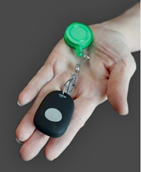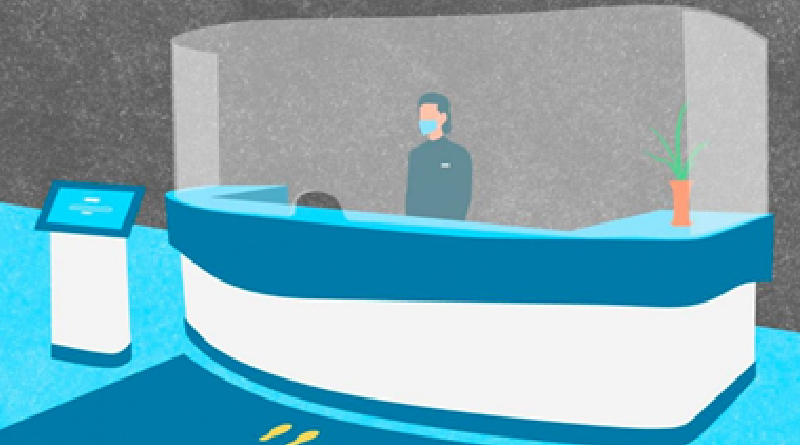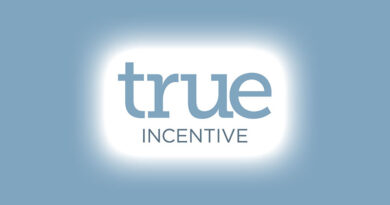It’s Time to Invest in Your Employees’ Safety
It’s a dangerous world out there. New threats are making it challenging to reduce risks facing hotel employees. Even with heightened cleaning standards and sanitizing technology, it may be difficult to lure frontline workers – especially housekeepers – back to work. Think about it. There is no Coronavirus vaccine; those who return to work are doing so knowing that conditions are unsafe and that they can potentially get sick. As an industry, we need to rally around these hero’s and do everything possible to motivate them to come back. We need to celebrate them. Train them. And most importantly, protect them from disease and threats of violence or sexual harassment.
Kudos to those who are using this time of quarantine closed doors, and low occupancy to establish strong employee safety cultures and honor their commitments to industry safety programs like the American Hotel & Lodging Assn.’s 5-Star Promise. Through this initiative, more than 70 companies voluntarily pledged to add employee safety devices (ESDs) or panic buttons by the end of 2020. Due to the pandemic, I expect some ownership groups will put pressure on the brands to push back this deadline to 2021 (the State of Illinois, for example, has already moved its deadline from June 30, 2020 to March 1, 2021). Others, however, are proactively forging ahead.
Take Aimbridge Hospitality, the world’s largest third-party hotel management company. Aimbridge employs roughly 60,000 people across 1,400 assets. Unfortunately, many hotel personnel was furloughed or laid off due to the Coronavirus. They are hourly employees living paycheck to paycheck. Fortunately, they have unemployment, but according to CEO Dave Johnson in the recent “ALIS 6×8: Recovery Top of Mind” webinar, the company is focused on getting their people back to work quickly. Raising the bar on employee safety and putting panic buttons in place is an important step towards achieving that goal.

 As former CIO of Aimbridge Hospitality, I was tasked with reviewing the various ESDs in the market. React Mobile stood out immediately as a highly trusted, best-in-class employee safety platform. Today, React Mobile cellular panic buttons with Bluetooth™ beacons are being rolled out to more than 70 Aimbridge Hospitality properties across the U.S. The devices pinpoint a distress call to a specific floor, room, public space, or recreational outlet inside or outside the asset within seconds. Essentially, any housekeeper, in-room dining or minibar attendant, registration agent, pool lifeguard, masseuse, valet, or office administrator can summon help in seconds — including mobilizing first responders for guests or co-workers who may be in medical distress.
As former CIO of Aimbridge Hospitality, I was tasked with reviewing the various ESDs in the market. React Mobile stood out immediately as a highly trusted, best-in-class employee safety platform. Today, React Mobile cellular panic buttons with Bluetooth™ beacons are being rolled out to more than 70 Aimbridge Hospitality properties across the U.S. The devices pinpoint a distress call to a specific floor, room, public space, or recreational outlet inside or outside the asset within seconds. Essentially, any housekeeper, in-room dining or minibar attendant, registration agent, pool lifeguard, masseuse, valet, or office administrator can summon help in seconds — including mobilizing first responders for guests or co-workers who may be in medical distress.
Now working as a hospitality consultant, I am often asked which technologies are needed to help properties reopen efficiently and which will be in high demand by travelers. My response is this: those that ensure employee safety, keep properties clean, and provide a contactless experience will build consumer confidence and get travelers and employees ready to return. Hotels that aren’t concerned with employee safety will find themselves plagued with turnover. And we all know it costs far more to hire and train new employees than it does to keep existing ones, especially with new cleaning procedures that are more intensive than before per AH&LA’s published COVID-19 standards.
To attract tomorrow’s travelers, cleanliness and “contactless” go hand in hand. Several hotel companies are leveraging cleaning technologies used by the cruise lines to sanitize and disinfect surfaces. Most major hotel brands have also set new standards and established best practices for cleaning that will put even the most germophobic travelers’ minds at ease. Other technologies, such as Mobile Key that turns guests’ smartphones into room keys, or using smartphones to utilize guest entertainment / in-room energy management, or smart speakers with voice assistants that encourage guests to ask for things rather than risking human interaction or touching potentially germy in-room devices, are gaining traction. Basically, anything that is high tech, but not high touch, will resonate well with travelers.
Although hoteliers are hesitant to spend money right now, and understandably so, collectively we need to get ready to reopen because finally we are seeing some light at the end of a very long, dark tunnel. Marriott International President and CEO Arne Sorenson said he believes recovery has started. In the “ALIS 6×8: Recovery Top of Mind” webinar, Sorenson said the global hotel company is already seeing 40% occupancy in China, and in the U.S., occupancy is building week over week as reported by Smith Travel Research. He said people are getting out because they can, and because they’re eager to see their families … get to the beach … do something. That will continue if State governments continue to release restrictions, and if the virus does not reverse and come back in bigger numbers vs. continue to decline.
Whether you agree with me that now is the best time to invest in employee safety technology or not, one thing is certain … those who are loyal to you deserve loyalty in return. Aimbridge Hospitality’s Dave Johnson said it best during the ALIS 6×8 inaugural event: “Our frontline workers — who each and every day go in to work, take care of guests, and put themselves at risk — they are the real hero’s in our industry.”
How will you reward your hero’s?
Jay Reed is a partner with CIO Suite, technology advisors to C-Level Executives of high growth entrepreneurial organizations. Previously, Jay held CIO roles with Aimbridge Hospitality, Omni Hotels & Resorts, Pillar Hotels & Resorts, Trammell Crow Residential, and was the second-in-command at Trammell Crow Company (now CBRE) and Wyndham International for 10+ years. Currently he sits on the Marriott IT Advisory Council and serves as an advisor to several other Hospitality technology suppliers to hotels.

Jay Reed is a partner with CIO Suite, technology advisors to C-Level Executives of high growth entrepreneurial organizations. Previously, Jay held CIO roles with Aimbridge Hospitality, Omni Hotels & Resorts, Pillar Hotels & Resorts, Trammell Crow Residential, and was the second-in-command at Trammell Crow Company (now CBRE) and Wyndham International for 10+ years. Currently, he sits on the Marriott IT Advisory Council and serves as an advisor to several other Hospitality technology suppliers to hotels.



